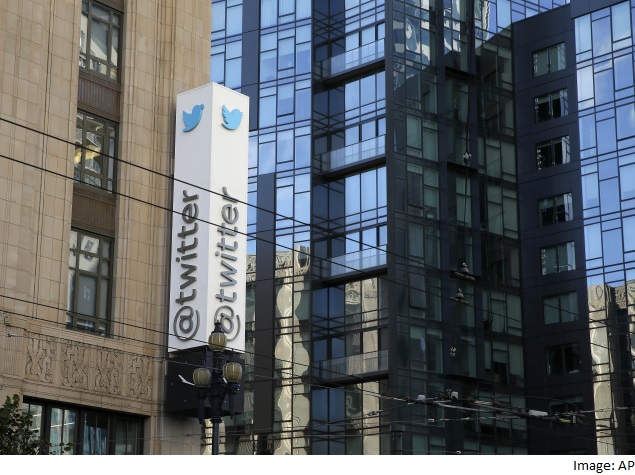- Home
- Social networking
- Social networking News
- Twitter's Chief Delivers on Updated Features, but Right Mix Is Elusive
Twitter's Chief Delivers on Updated Features, but Right Mix Is Elusive

In the past few months, Twitter has unveiled a blizzard of new features for its microblogging network, from a revamped home page that allows newcomers to browse popular posts by topic to automatic recaps of top tweets for users who don't constantly check their feeds. It even introduced an app, Periscope, that allows people to post live video feeds to the network.
But as Costolo prepares to give investors a progress report on the company's efforts Tuesday, it is clear that the new new Twitter is still wrestling with the same old problem: how to help people like Edgar S. Cahn and his granddaughter, Danielle, make sense of the complicated service.
Edgar Cahn, an 80-year-old law professor at the University of the District of Columbia, joined Twitter on April 18 with help from Danielle Cahn, 22, who is studying writing at American University and created her own account only three months earlier. Although he loves the ability to connect with old friends and associates, Twitter conventions like retweeting, following and 140-character thought bubbles have so far eluded him.
"It's different from the kind of Ciceronian sentences that are my default mode," said Edgar Cahn, who was a speechwriter for Robert F. Kennedy and later pioneered a form of volunteerism called timebanking. Danielle Cahn sends screenshots of tweets to him on his iPhone and he texts her back messages to edit and tweet on his behalf.
Danielle Cahn is just one step ahead of her grandfather on the Twitter learning curve. "They set you up with X amount of people you can follow. You don't even know in the beginning why you should follow them," she said. "I don't feel like I navigate it at all."
Danielle Cahn follows the tweets of Kim Kardashian and a few comedians but generally prefers the hometown atmosphere of Facebook and the one-on-one nature of Snapchat, two services that are growing more quickly than Twitter while introducing their own enhancements to lure and retain users.
Alex Roetter, Twitter's head of engineering, says the company understands that it needs to do more to help people like the Cahns get value from the service, which is at its best when it is reflecting what its users are obsessing about at any given moment.
"Twitter knows there is an earthquake before anyone else reports there is an earthquake," said Roetter, who sat down for a joint interview last month at the company's San Francisco headquarters with Kevin Weil, Twitter's head of product. "What we're focused on is building a product that, with no investment up front, you can get the unique things that make Twitter Twitter."
Weil, who helped build Twitter's video advertising business, said that Google's YouTube is an example of the type of experience that Twitter wants to be able to provide to everyone. "YouTube has great content. Most of it's public," he said. "They don't need you to log in to provide value" - or for that matter, to show advertising.
Weil and Roetter, who say they are "joined at the hip all day long," have been charged with reinventing Twitter's user experience as part of the new management team that Costolo put in place last year after pushing out his chief operating officer and his top product, engineering and financial executives.
Through a spokesman, Costolo declined interview requests. But after a disappointing first year as a public company, he told Wall Street analysts in November that Twitter needed to "accelerate the pace and breadth of product change."
Now change is happening so fast it is hard to keep up. Twitter recently added long-delayed basics to its private messaging service, such as the ability to forward a tweet, send messages to a group and receive messages from strangers.
A couple of weeks ago, Twitter's home page stopped forcing curious visitors to sign up for an account and instead offered them samples of tweets on such topics as celebrity chefs and space exploration. After months of pressure from activists and a leaked rant from Costolo, the company has also tightened its rules about abuse and threats made on the service.
Costolo seems satisfied that he now has the right team in place to achieve his audacious - perhaps impossible - goal of reaching the largest daily audience in the world. (As of December, Twitter had 288 million users logging in at least once a month, one-fifth the audience of Facebook.)
For now, the changes have pacified Wall Street, where some disgruntled investors were calling for Costolo's resignation just a few months ago. The company's stock is up about 45 percent since the beginning of the year.
But concerns remain that for all the frenetic activity, the attention of users and advertisers is straying to other platforms.
"It has definitely gotten more crowded," said Dave Marsey, who heads the San Francisco office of Digitas, an advertising agency, and works closely with brands like Taco Bell and eBay.
While Twitter is still ideal for marketing tied to current events, he said, advertisers are trying to figure out how to tap into more private spaces like Snapchat and Facebook's Messenger. "It's inherently appealing and intriguing to be able to inject yourself into a platform where people are making plans," he said.
Even one of Twitter's biggest fans, analyst Robert Peck of SunTrust Robinson Humphrey, is less excited now about the company. On Monday, he downgraded the company's stock to "neutral."
In an interview, Peck said it was not clear that the product changes will sustainably draw new users.
The rapid growth of advertising on Twitter, which provides virtually all of the company's revenue, could also slow. Ad prices are rising, and "it's not the must-buy that Facebook is for advertisers," he said.
In addition, SunTrust's research found that Twitter's systems are showing ads from top brands next to pornography and other inappropriate content. "We don't think Twitter would do this purposefully," he said. "But Twitter is either going to have cleanse those users from its user base or advertisers will force Twitter to prove its ads are going where they want them to."
Danielle Cahn, the young college student in Washington, does not care about ads or Twitter's stock price. With just 44 followers on the service, she is more bothered by the loneliness she feels tweeting into the void.
"Facebook makes you feel like you matter," she said. "Twitter is like New York. You can be the Naked Cowboy singing in Times Square, but people aren't going to be paying much attention to you. No one's that interested."
© 2015 New York Times News Service
For the latest tech news and reviews, follow Gadgets 360 on X, Facebook, WhatsApp, Threads and Google News. For the latest videos on gadgets and tech, subscribe to our YouTube channel. If you want to know everything about top influencers, follow our in-house Who'sThat360 on Instagram and YouTube.
Related Stories
- Samsung Galaxy Unpacked 2025
- ChatGPT
- Redmi Note 14 Pro+
- iPhone 16
- Apple Vision Pro
- Oneplus 12
- OnePlus Nord CE 3 Lite 5G
- iPhone 13
- Xiaomi 14 Pro
- Oppo Find N3
- Tecno Spark Go (2023)
- Realme V30
- Best Phones Under 25000
- Samsung Galaxy S24 Series
- Cryptocurrency
- iQoo 12
- Samsung Galaxy S24 Ultra
- Giottus
- Samsung Galaxy Z Flip 5
- Apple 'Scary Fast'
- Housefull 5
- GoPro Hero 12 Black Review
- Invincible Season 2
- JioGlass
- HD Ready TV
- Laptop Under 50000
- Smartwatch Under 10000
- Latest Mobile Phones
- Compare Phones
- OnePlus 13T
- Honor 400 Lite
- Honor Play 60m
- Honor Play 60
- Poco C71
- Lava Bold 5G
- Huawei Pura X
- Motorola Edge 60 Fusion
- Acer TravelLite (2025)
- Asus Zenbook 14 (2025)
- Samsung Galaxy Tab S10 FE+
- Samsung Galaxy Tab S10 FE
- Garmin Instinct 3
- Garmin Instinct E
- Haier M80F Mini LED 4K
- Haier M95E
- Nintendo Switch 2
- Sony PlayStation 5 Pro
- LG 1 Ton 3 Star Inverter Split AC (US-Q12JNXE)
- LG 1.5 Ton 3 Star Inverter Split AC (TS-UH19VNXE)

















